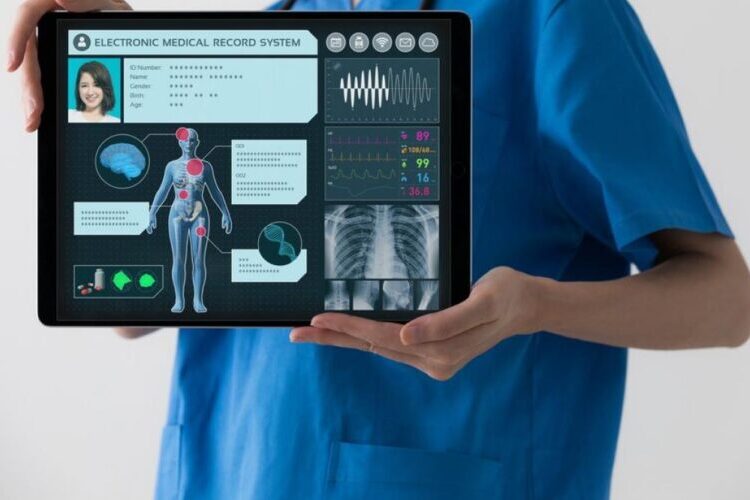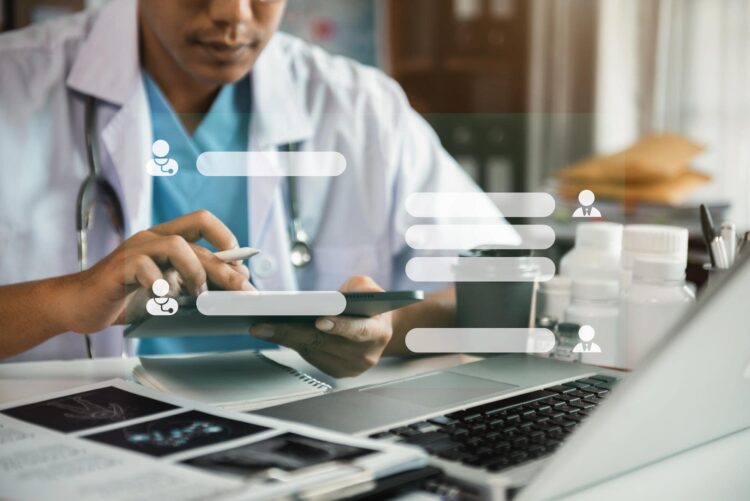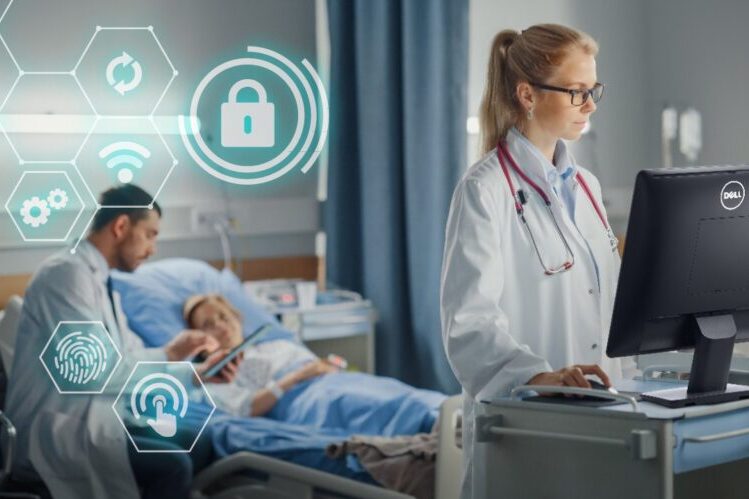The health industry has seen a remarkable transformation in recent years, particularly in information technology. Once reliant on traditional methods, this sector has rapidly adopted various types of medical systems, marking a huge shift in how medical services are delivered.
The growth of the healthcare IT market, a direct response to the industry’s evolving demands, has been further accelerated by the challenges and necessities brought forth by COVID-19.
During the pandemic, the reliance on such software surged as medical facilities sought efficient ways to manage patient records while minimizing physical contact. This period saw an unprecedented integration of tech in healthcare, ranging from remote consultations to advanced electronic record-keeping systems.
Post-COVID-19, the relevance of healthcare software has only intensified. It has become evident that technology is a temporary solution and a cornerstone of modern healthcare.
This sector is experiencing steady growth, with an emphasis on developing systems that improve interactions between patients and doctors, optimize management operations, and facilitate online consultations and financial transactions.
Custom healthcare software development companies like Evrone are at the forefront of this digital revolution, providing innovative solutions that respond to the evolving needs of the healthcare market.
What Type of Software is Used in Healthcare?

This section delves into the primary list of healthcare software types, outlining their essential functions and providing illustrative examples.
- Electronic health record (EHR) software: It contains a patient’s medical history, diagnoses, medications, treatment plans, immunization dates, allergies, radiology images, and laboratory and test results. EHRs are patient-centered and designed for sharing information with other providers, ensuring that data is available to authorized users in a streamlined and secure manner. Examples include Epic Systems and Cerner.
- Medical database software: It serves as a repository for vast amounts of data, including patient records, research data, and clinical information. Medical databases are crucial for hospitals and research centers to store and retrieve data efficiently, assisting in research and patient care. An example is IBM Watson Health.
- Telemedicine software: It enables healthcare providers to conduct remote consultations and treatments through video conferencing, messaging, and mobile apps. This technology became particularly vital during the COVID-19 pandemic, allowing doctors to provide care while maintaining social distancing. Examples include Teladoc and Amwell.
- Appointment scheduling software: It streamlines the process of scheduling patient appointments. It allows patients to view available times, book appointments, and receive reminders. These systems are essential for reducing wait times and improving patient satisfaction. Zocdoc and SimplyBook.me are well-known examples.
- Medical billing software: It simplifies the medical billing process by automating and managing billing operations. It includes features like insurance verification, claims processing, and payment tracking. It ensures accuracy and efficiency in the billing process. Examples include Kareo Billing and DrChrono.
- Hospital management software: It manages all aspects of hospital operations, from patient care to administrative processes. It includes modules for patient management, inventory control, staff scheduling, and more. This software is crucial for the efficient operation of hospitals. Examples include Meditech and eHospital.
- Medical equipment management software: It helps healthcare facilities track and manage their medical equipment. It includes inventory management, maintenance scheduling, and compliance tracking, ensuring that medical devices are safe, functional, and available when needed. An example is eMaint CMMS.
- Mobile health (mHealth) apps: mHealth apps are mobile applications designed to offer health-related services on smartphones and tablets. These apps range from fitness trackers and medication reminders to remote patient monitoring and diagnostic tools. They play a significant role in patient engagement and preventive healthcare. Examples include MyFitnessPal and Apple Health.
Each of these software types plays a critical role in the industry, contributing to the enhancement of patient care, efficiency of operations, and the overall effectiveness of medical services. As technology continues to evolve, these software systems will undoubtedly adapt and grow, further revolutionizing the healthcare landscape.
Current Trends in Healthcare Software
The landscape of healthcare software, including telemedicine solutions, is continually evolving to meet the dynamic needs of the industry. In this section, we will explore the current trends that are shaping the future of healthcare technology, with a particular focus on the role of telemedicine solutions.
Trends in Healthcare Software:
Artificial Intelligence (AI) and Machine Learning: AI and machine learning are increasingly being integrated into healthcare software for predictive analytics, disease diagnosis, and personalized treatment plans. These technologies enable healthcare providers to make data-driven decisions and offer more precise care.
Interoperability: There is a growing emphasis on the interoperability of different healthcare systems and software. This trend aims to enhance data exchange and collaboration among various healthcare providers, ensuring that patient information flows seamlessly between systems.
Patient Engagement: Modern healthcare software is designed with a strong focus on patient engagement. User-friendly interfaces and personalized health tracking features encourage active patient participation in managing their health and treatment plans.
Future Trends and Challenges in Healthcare Software

This section examines the emerging trends and potential challenges that may shape the future of healthcare technology.
Emerging trends:
- Artificial intelligence and machine learning: These technologies are increasingly being integrated for predictive analytics, disease diagnosis, and personalized treatment plans.
- Interoperability: There’s a growing emphasis on the ability of different healthcare systems and software to work together seamlessly, enhancing data exchange and collaboration across various providers.
- Increased focus on patient engagement: Software solutions are being designed to encourage active patient participation in their journey through user-friendly interfaces and personalized health tracking.
Potential challenges:
- Data privacy and security: As reliance on digital solutions increases, so does the risk of data breaches. Ensuring the security of patient data remains a paramount concern.
- Regulatory compliance: Navigating the complex landscape of regulations, especially as software solutions become more advanced, poses a challenge for developers and healthcare providers alike.
- Technology adoption: The rate at which new technologies are adopted varies widely across different regions and healthcare systems, potentially leading to disparities in healthcare quality.
Integrating Healthcare Software
This section outlines key best practices that healthcare providers and administrators should consider for effective software implementation and use.
- User-centric design: Software should be designed with the end-user in mind—be it healthcare professionals, administrative staff, or patients. A user-friendly interface and intuitive navigation are essential for ensuring widespread adoption and effective use.
- Comprehensive training: Providing thorough training for all users is crucial. This ensures that everyone understands how to use the software efficiently and can leverage its full capabilities to improve patient care and administrative processes.
- Data security and compliance: Prioritizing the security of patient data is non-negotiable. Healthcare software must comply with relevant data protection regulations, such as HIPAA in the United States, to safeguard patient information and maintain trust.
- Continuous evaluation and feedback: Regularly evaluating the performance of the software and seeking feedback from users helps identify areas for improvement. This iterative process ensures the software evolves to meet the changing needs of the healthcare environment.
- Collaboration with vendors: Building a strong relationship with software vendors can aid in customizing solutions to fit specific needs and ensures prompt support when issues arise.
Using Technology for a Healthier Future

In conclusion, the various types of software used in the healthcare industry have become instrumental in modernizing and enhancing patient care. From Electronic Health Records to Telemedicine Software, each system offers unique benefits, contributing significantly to the efficiency, accuracy, and accessibility of the services.
The integration of these technologies represents a significant leap forward for the healthcare sector, promising not only improved patient outcomes but also streamlined processes and better resource management.
As we continue to navigate through a post-COVID-19 world, the reliance on and development of healthcare software will undoubtedly increase. Embracing these technological advancements is key to shaping a future where healthcare is more accessible, efficient, and patient-centered.




